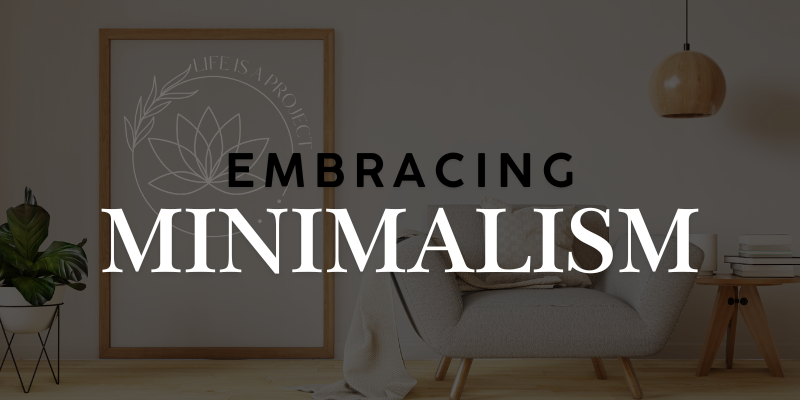Why Mindfulness Matters (Even if You’re Busy)
You’re a busy professional. Deadlines loom, meetings stack up, and your to-do list grows faster than you can check items off. Life feels like a juggling act, and the idea of “mindfulness” might seem like just another ball to toss in the air. But what if mindfulness could actually help you catch your breath and stop the mental scramble?
The good news is that mindfulness doesn’t have to be hard. You don’t need hours in your day, or some serene mountaintop setting, to feel its benefits. Mindfulness is about being fully present—tuning into what’s happening right now. And with just a few small changes, you can make it your secret weapon against stress and burnout. Let’s dive into how you can start bringing mindfulness into your life today, even if you feel like you have zero time.
Start Small—5 Minutes to Reset Your Day
If you’re just getting started, thinking of mindfulness as a huge commitment can be overwhelming. But it’s not about meditating for hours on end. In fact, you can get the ball rolling with just five minutes a day. Here’s a simple way to start:
- Set a Timer: Pick any time of the day when you can spare five minutes. It could be first thing in the morning, during a lunch break, or even right before bed.
- Breathe: Close your eyes, if you’re comfortable, and take a deep breath. Inhale slowly, hold it for a second, then exhale fully. Repeat a few times, paying attention to the rise and fall of your chest.
- Observe: As you breathe, notice how you feel. Are your shoulders tight? Are you relaxed? Just notice without trying to change anything. The goal is awareness, not perfection.
Starting with these quick, five-minute mindful check-ins helps you create space in your day without feeling like you’re adding another item to your to-do list.
Ready for more? Let’s talk about bringing mindfulness into the everyday things you’re already doing.
Bring Mindfulness to Everyday Tasks
Mindfulness doesn’t only happen when you’re sitting still. You can bring it into everyday moments, making even the most mundane tasks opportunities to practice.
- Mindful Eating: Next time you sit down for a meal, slow down and savor it. Notice the flavors, textures, and smells. Eat without distractions—put your phone away, turn off the TV, and focus on enjoying your food.
- Mindful Walking: Whether you’re walking to the store, around your neighborhood, or even pacing between meetings, notice your surroundings. Feel your feet on the ground, listen to the sounds around you, and pay attention to how your body moves with each step.
- Mindful Listening: During conversations, try giving your full attention to the person speaking. Instead of planning your response, focus on their words, tone, and body language. It’s a simple way to connect deeper and practice mindfulness.
These small moments can make a huge difference in your day-to-day experience. When you approach tasks with mindfulness, they stop feeling like chores and start feeling like opportunities to be present.
So how can you take mindfulness into your workday? Let’s explore that next.
Mindfulness at Work—Staying Present in a Busy Day
Workdays are notorious for their chaos. You’ve got emails to send, calls to join, and projects to manage. But sprinkling mindfulness into your work routine can help you stay grounded, focused, and less overwhelmed. Here’s how:
- Pause Before Meetings: Before you hop on Zoom or walk into a meeting, take one deep breath. It sounds simple, but it’s a great way to reset your focus and bring your full attention to the conversation.
- Set Mindful Reminders: Every hour or so, set a reminder on your phone to check in with yourself. How’s your posture? Are you breathing deeply or shallowly? This mini check-in helps you stay connected to the present moment.
- Email Mindfulness: When writing or reading an email, take a moment to pause before hitting send. Re-read the message slowly, focusing on how it sounds and how you want it to come across.
Practicing mindfulness at work doesn’t mean slowing down productivity. In fact, it can make you more efficient by helping you focus better on what’s in front of you.
Feeling like you’re too busy for all this mindfulness? We’ve got a reframe for that.
Too Busy for Mindfulness? Let’s Reframe That
“I’m too busy” is the number one reason people hesitate to start a mindfulness practice. But here’s the reality: you’re not too busy to be mindful. Mindfulness isn’t about doing something extra; it’s about paying more attention to what you’re already doing.
- Micro-Mindfulness: It doesn’t take 30 minutes of sitting still to feel mindful. Try 10-second pauses throughout your day. Just stop, breathe, and notice how you feel. That’s mindfulness!
- Mindful Transitions: Between tasks, instead of rushing from one thing to the next, take a mindful pause. Before starting a new task, take a breath, clear your mind, and then begin. This helps prevent your brain from feeling cluttered and overwhelmed.
So, what’s the next step? Let’s talk about keeping your mindfulness habit going.
Building Consistency—Staying on Track
The key to a successful mindfulness practice is consistency, but that doesn’t mean it has to be rigid or feel like a chore. Here are some ways to build mindfulness into your routine in a fun, manageable way:
- Habit Stacking: Attach your mindfulness practice to something you’re already doing. For example, while you drink your morning coffee, take a mindful moment. Focus on the warmth of the cup, the taste, and the experience of just enjoying the drink.
- Mindful Tech Use: Use an app like Calm or Headspace to guide you through short meditation or breathing exercises. These apps make mindfulness accessible and easy to fit into your day.
- Track Your Progress: Keeping a simple log of when you practice mindfulness can be a great motivator. Whether it’s a journal or a checklist, tracking your practice helps you see your progress and encourages you to keep going.
Mindfulness, like anything else, gets easier with time. The more you do it, the more natural it becomes. And soon enough, you’ll find yourself incorporating mindful moments throughout your day without even thinking about it.
Your Mindfulness Checklist
To help you get started and stay on track, here’s a simple checklist to follow:
- Start with 5 minutes of mindful breathing each day.
- Bring mindfulness to daily activities (eating, walking, listening).
- Incorporate mindful moments into your workday (before meetings, during email checks).
- Reframe “too busy” as an opportunity for micro-mindfulness.
- Use habit stacking and apps to build consistency.
That’s it! Mindfulness doesn’t have to be complicated, time-consuming, or intimidating. With these simple steps, you can make mindfulness a natural part of your daily routine, no matter how busy life gets.



